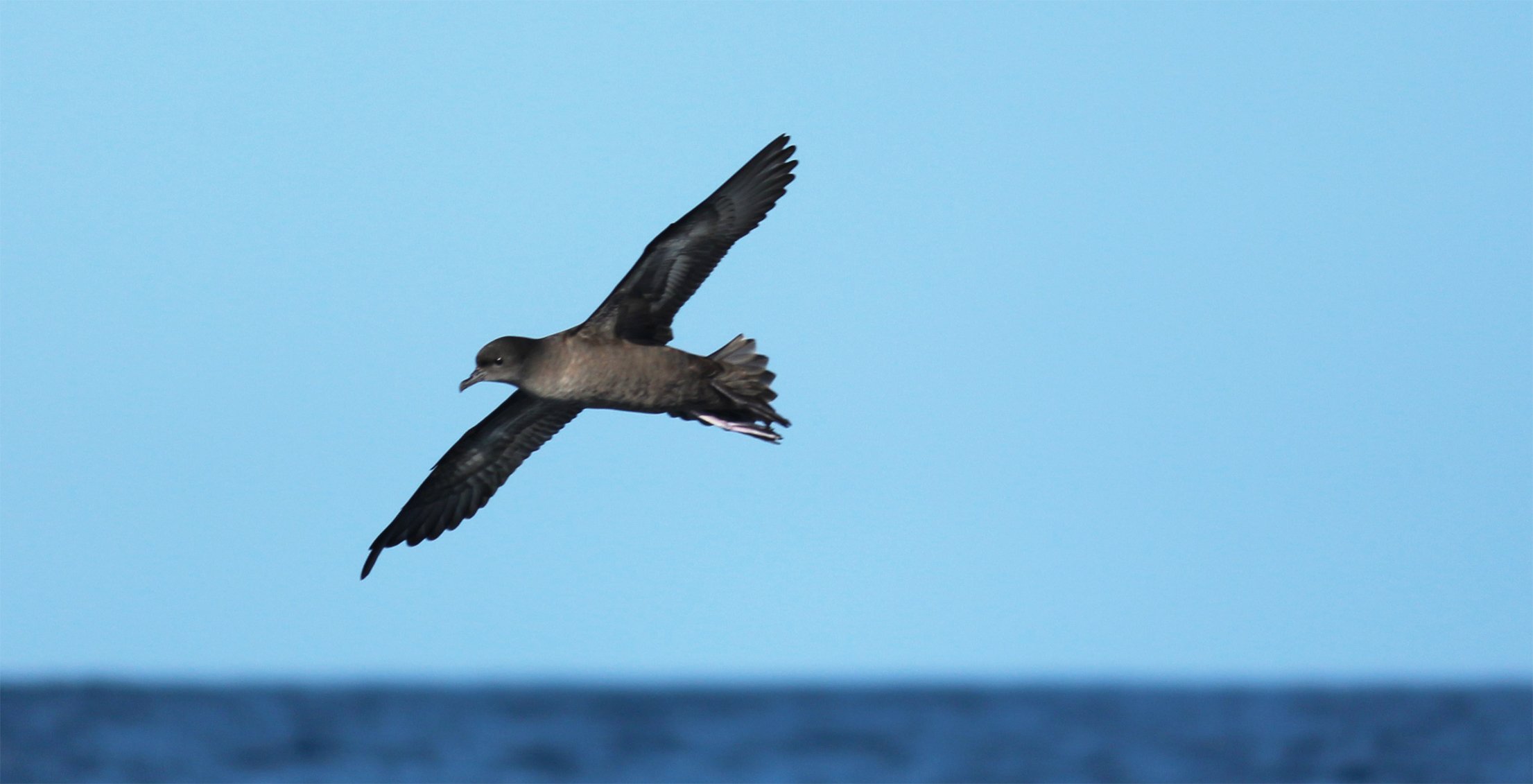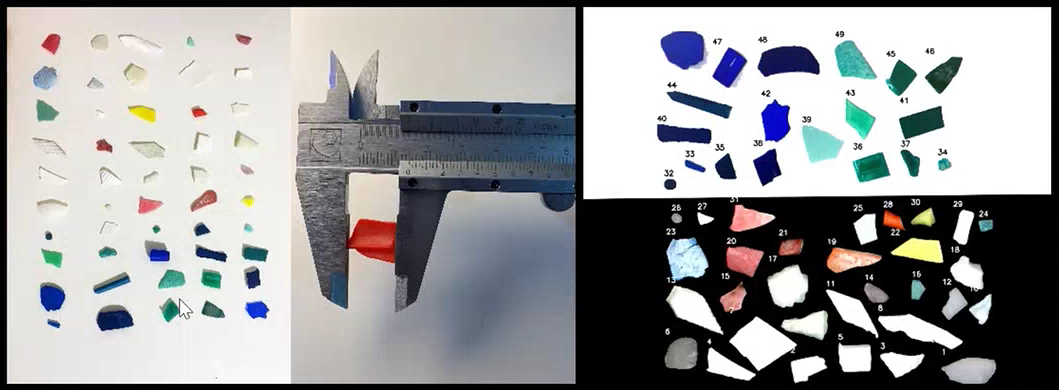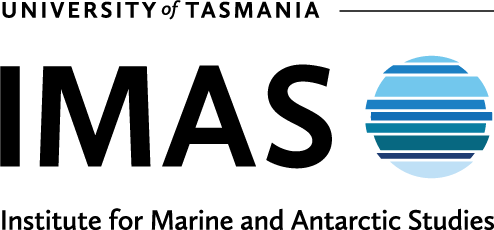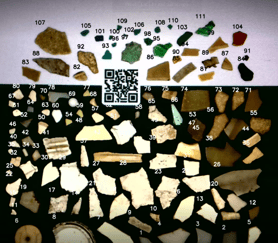New Technology Accelerates Seabird Microplastics Research
New Technology Accelerates Seabird Microplastics Research
From around the world, people flock to the picturesque Lord Howe Island to see a remarkable seabird spectacle. Thousands of shearwaters, or muttonbirds as they are locally known, cover the evening skies during the breeding season, creating one of the most incredible bird displays in the world. Although the tiny island situated between Australia and New Zealand is home to only 300 people, its shearwaters are notoriously slammed with plastics, more than other seabirds.
To investigate this mystery, researchers need a holistic understanding of plastics in the environment and in these seabirds, which requires consolidating and comparing information from various environments. University of Tasmania researchers took on this task, analyzing plastics within the stomachs of two shearwater species collected throughout the past decade as well as plastics found on four different beaches.
Incredibly, over 500 shearwater stomachs and thousands of plastics were rapidly processed using a new automated imaging technology called the Saturna Imaging System. Saturna captured microplastic dimensions and colour so that they could be characterized at a much faster and more accurate rate than manual methods, making the plastic data across environments comparable and saving researchers time so they could expand the study and gather more information.
“If we want to start understanding the plastic problem, we need to be innovative and start using the tools and technologies that are available to us...We have different categories and methods for different plastic types. What we find in manta trawl studies may be very different than what we find on the beach. Saturna offers a way to categorize plastics across these environments, to look at the similarities,” explains co-supervisor on the study, Dr. Peter Puskic.

Harmonizing plastic ingestion and beach sampling methods through advanced technology
An inherent difficulty in plastics research is the different measurement techniques and parameters used by researchers around the globe. Often scientists focus on one environmental context, whether it be on a beach, at sea or inside an animal, and they become very skilled at identifying plastics from this one area, but their methods to characterize and report microplastics differ from other studies. Different measurements and reporting make it challenging to get a comprehensive view of the plastic pollution problem.
As a part of her master's project, University of Tasmania researcher, Fernanda Landim, developed an updated methodology to characterize and compare plastics eaten by seabirds and those in their environment, floating at sea or stranded on a beach.
By harmonizing methods, researchers can track the cycle of plastics, from the plastics in the water and on beaches, to those ending up in seabirds.
Under the guidance of her supervisor, Dr. Lauren Roman of the Institute for Marine and Antarctic Studies and co-supervisor, Dr. Peter Puskic, Fernanda analyzed microplastics (less than 5 mm in length) and mesoplastics (5 mm to 25 mm) from within flesh-footed shearwaters collected on Lord Howe Island and short-tailed shearwaters collected at various sites in eastern Australia, including the Furneaux Islands. She also analyzed microplastics found on four sandy beaches in Southeast Tasmania.
The shearwaters were collected over the last decade by researchers and local Palawa people, who voiced their concerns about plastics affecting both the shearwaters and the local beaches. There were over 500 birds to assess, resulting in a huge sum of microplastics to count, measure and record characteristics.
Fernanda leveraged the Saturna Imaging System designed by Ocean Diagnostics to rapidly capture the measurements, colour and other characteristics of various plastics using AI-based learning. In doing so, she was able to analyze 4,478 plastics ingested by flesh-footed shearwaters and short-tailed shearwaters and 1,409 plastics collected on Tasmania beaches.
“Without a doubt, what benefited me the most was the time savings. Measurements with Saturna are much faster than manual ones. Also, in terms of colours, Saturna can categorize plastic colours into a much greater variety than the naked eye can,” explains Fernanda.
“I never imagined there could be something like this that would make life easier for researchers.” - Fernanda Landim
Fernanda found that the time required to process 50 microplastic particles and record height, width, depth and colour, key for source and impact assessments, was reduced from over 1 hour to a mere 5 minutes using Saturna. While scientifically studying the time-saving capabilities, Fernanda noted a twelvefold increase in efficiency with the use of the Saturna Imaging System.
“Based on this test, I can confidently say that Saturna is a highly precise tool and significantly reduces the time required for analysis,” says Fernanda.

Recording plastic types is critical to determine the plastics impact
Researchers shared an image of a shearwater stomach with plastics stretching it out like a small balloon filled with sharp, thin rocks. Fragments in the stomach formed unnatural shapes, uneven rectangles and triangles that were visible from the outside. One bird revealed hemorrhages suspected to be from the plastics. In these birds, fragments appear more harmful than round plastics with soft edges.
To help understand how harmful microplastics are, research can look at roundness or circularity, a number between 0.01-1.00. Those with a score of 1.00 are perfectly circular. Circularity is just one of the 13 different data types that are automatically measured for each microplastic using Saturna. It requires calculations and would take extensive time for each microplastic if done manually.
Colour is also an important data point to help determine where plastics come from or why they are being eaten (do they look like prey?), but colour is subjective. Can you think of a time where you thought something was blue, when your friends insisted it was purple? Saturna standardizes colour data to both reduce the analysis time and increase reliable data by reducing human error.
Sadly, one shearwater had over 100 plastic particles in their stomach, which isn’t much larger than a human thumb. Characterizing over 100 particles in one bird, with another 500 remaining, is a daunting task.
Despite the high number of plastics to analyze, the data needs to be recorded to determine where plastics come from and the harm they may cause after being eaten. Saturna records 13 data types in one snapshot, which significantly reduces the time needed to analyze microplastics.
“The amount of information Saturna pumps out is amazing – it gives you the surface area, quantities, the colour – and none of it is subject to vagaries of the human eye,” says Dr. Puskic.
”From a scientific perspective, Saturna helps standardize. You can be specific about a plastic particle, and then you can always pull it back to a higher level of categorization. For example, I might have found and recorded a bottle cap, but if I want to compare it to a different dataset, I can always pull it back to ‘hard plastics.’ Having that flexibility and harmonization is super important, but it takes time to be specific. Having this tool allows you to be specific without using too much time.”
Seabirds as sentinels for ocean plastic research
Shearwaters are unique in how they find food and navigate the ocean. Like petrels and albatrosses, they are tube-nosed and rely on their smell to find food in the open ocean. While the unique skill of tube-nosed shearwaters is advantageous at sea, it may explain why they accumulate plastics in their stomachs.
Plastics are a deceptive threat. Over time, organisms adhere to them in the ocean, creating a disguise (a process called biofouling or creating a biofilm). As shearwaters scan ocean waters for sustenance, they can ingest plastic pieces that appear like their usual food.
When seabirds accidentally eat plastics, it may harm them and hurt their chances of survival. The sharp edges of the plastics can cause physical harm by poking or blocking stomachs. Plastics can also make an animal feel full without providing proper nutrition.
By studying the plastics these birds eat, we can learn which plastics enter the ocean and environment. Shearwaters offer an opportunity for us to learn about ocean health.
“Research on plastics in seabirds can raise public awareness of the urgency of plastic pollution and its impact on marine ecosystems. This awareness can lead to greater public support for policies and regulations aimed at reducing plastic waste and its entry into the oceans,” explains Fernanda.
Fernanda notes that people may be interested to know what seabirds are eating to try to help minimize the consumption of this type of plastic. For example, she and colleagues have found balloon clips, bottle caps, nurdles, lollipop sticks, straws, electrical wire and many fragments.
“There are a million reasons we should study plastics in birds. First, plastics shouldn’t be in a bird’s diet,” mentions Dr. Puskic. “The exponential production of plastics needs to end up somewhere. Knowing how much plastics are in these birds gets people to care. It pulls at the heart strings and gets people to generate momentum. It helps people identify pathways forward, understanding the health of the environment to adopt changes.”
Studying the plastics ingested over time also helps researchers and governments understand if new regulations to reduce plastic pollution are working and what sources of plastic pollution need to be further targeted for reduction strategies.
In the past, University of California and University of Texas researchers suggested that there were more plastic pellets (or nurdles) in shearwater stomachs than fragments, but now there are definitely more plastic fragments from the items we use in our day-to-day lives.
There are many reasons plastics eaten have changed over time, which makes Saturna useful, so changes like this can be detected, even if samples are collected by different researchers, using different instruction and speaking different languages across the world.
Saturna offers data to assess if policies and actions are working, like nurdle spillage reduction strategies. Shearwaters can monitor the oceans and give us clues as to where we should focus mitigation efforts.

Decoding plastics’ impact on shearwaters and beyond
"I think it is kind of scary that there are plastics in these remote and sensitive regions, and it is clearly impacting the birds," Peter notes, highlighting the unsettling presence of plastics in areas with few humans, including remote Lord Howe Island.
Plastics have woven themselves into every corner of our lives. Using technology available to quickly measure and characterize microplastics and mesoplastics is imperative as the quantities of plastics in our ocean continues to increase.
Seabirds are indicators of marine ecosystems health. To develop monitoring plans and actions to help in shearwater conservation, researchers and governments need data. In this study, over thousands of plastics from seabirds and beaches were rapidly assessed. The accuracy and speed were enabled through the Saturna Imaging System, a helpful tool for plastic research.
Increasing researchers' capacity to measure microplastics aids in our understanding of where these micro and mesoplastics are coming from and what danger they cause to seabirds as indicators of ocean health.
Plastics are everywhere, we use them every day. We need to leverage all of the technology available to quickly study their sources, mitigate them and protect our oceans.
Ocean Diagnostics Inc. (ODI) is a Victoria, B.C.-based environmental impact company that diagnoses and protects our planet from the threats of plastic pollution and biodiversity loss. Through innovative technology, cutting-edge laboratory capabilities and collaborative partnerships, ODI enables scientists and the public to collect the data needed to influence local and global solutions.
Research from University of Tasmania.


